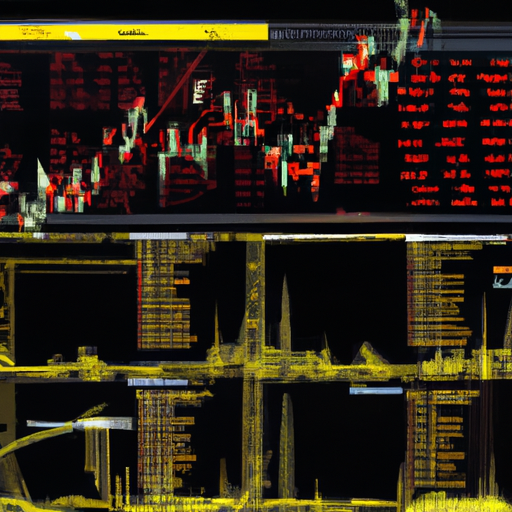Low-Latency Trading
Understanding the basics of low-latency trading
Low-latency trading is a critical aspect of modern financial markets, especially for those involved in high-frequency trading (hft).
At its core, low-latency trading refers to the minimization of delays in the electronic transmission of buy and sell orders.
In other words, it’s about executing trades as quickly as possible.
Imagine you’re a trader who has just spotted a lucrative opportunity.
In the time it takes for your order to reach the exchange and get executed, prices could change drastically.
This is where low-latency systems come into play, ensuring that your trades are executed almost instantly.
The importance of speed in trading
Speed is everything in the world of trading.
Even a delay of milliseconds can mean the difference between a profitable trade and a loss.
For instance, let’s say you’re using an automated trading system that identifies an arbitrage opportunity between two assets.
If your system takes too long to execute the trade, another trader with a faster system might beat you to it, erasing any potential profit.
Therefore, low-latency trading systems are designed to reduce these delays to an absolute minimum.
How low-latency trading works
Low-latency trading involves several technological advancements and strategies aimed at reducing delays:
1. Optimized algorithms: algorithms are fine-tuned to execute trades more efficiently.
2. Co-location: placing servers close to exchange servers reduces data transmission time.
3. High-speed networks: utilizing advanced networking technologies ensures rapid data transfer.
4. Fast hardware: employing state-of-the-art processors and memory speeds up calculations.
5. Efficient software: streamlined software minimizes processing time within systems.
These components work together to ensure that traders can act on opportunities faster than their competitors.
Real-life examples of low-latency trading
To better understand low-latency trading, let’s look at some real-life examples:
Example 1: high-frequency trading firms
High-frequency trading (hft) firms are perhaps the most well-known practitioners of low-latency trading.
These firms use sophisticated algorithms and powerful computers located near stock exchanges to execute thousands of trades per second.
Their goal is often to capitalize on small price discrepancies across different markets or securities within fractions of a second.
For instance, if there’s a slight price difference between two exchanges for the same stock, an hft firm will quickly buy on one exchange and sell on another for a profit before prices align again.
Example 2: quantitative hedge funds
Quantitative hedge funds also rely heavily on low-latency trading strategies.
These funds use mathematical models and statistical techniques to identify market inefficiencies and exploit them through rapid execution of trades.
By minimizing latency, they can ensure that their models’ predictions are acted upon before market conditions change significantly.
The role of technology in low-latency trading
Technology plays an indispensable role in achieving low latency in trading operations:
Advanced networking solutions
One key aspect is advanced networking solutions such as fiber optics or microwave transmissions which significantly reduce data travel time compared with traditional methods like copper cables or satellite links due primarily because they offer straight-line paths instead going around obstacles like mountains etc., Thereby cutting down distances traveled by signals making them faster overall resulting lower latencies experienced during order executions leading better outcomes financially speaking!
Another important factor contributing towards achieving desired results lies within realm software development where programmers write highly efficient code capable running seamlessly across multiple platforms without causing bottlenecks anywhere along way thus ensuring smooth operation throughout entire process from start finish thereby enabling traders achieve maximum profitability possible given current market conditions prevailing at any given moment time frame under consideration!
Challenges and risks associated with low-latency trading
While low latency offers many advantages it doesn’t come without its own set challenges risks associated primarily due fact involves dealing extremely volatile environments where slightest miscalculation could lead catastrophic losses if not managed properly beforehand hence why risk management becomes crucial component successful implementation these types strategies over long term basis sustainable growth purposes only!
Additionally there’s always danger technological failures occurring unexpectedly causing disruptions normal operations potentially resulting significant financial damages incurred parties involved directly indirectly affected by such events happening suddenly without warning whatsoever leaving little room maneuverability response times limited severely under circumstances presented themselves accordingly requiring immediate attention resolution order mitigate adverse effects experienced during periods instability uncertainty surrounding overall situation faced collectively speaking generally accepted terms industry standards practices adopted globally today!
So while pursuing goals related achieving lower latencies remains top priority among professionals working field must remain vigilant constantly monitoring systems processes ensure smooth functioning uninterrupted manner possible thereby avoiding pitfalls associated inherently risky nature endeavors undertaken behalf clients stakeholders alike ultimately benefiting everyone concerned positively impacting bottom lines respective organizations participating actively marketplace currently experiencing unprecedented levels competition innovation driving future developments forward continuously evolving landscape shaping tomorrow’s financial world today!










